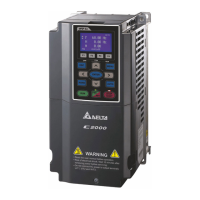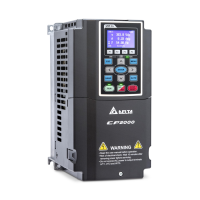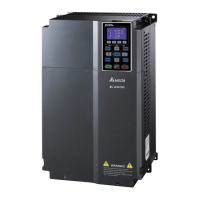Chapter 12 Descriptions of Parameter SettingsC2000 Plus
12.1-08-6
time. The smaller the integral time, the stronger integral action. It is helpful to reduce overshoot
and oscillation for a stable system. Accordingly, the speed to lower the steady-state deviation
decreases. The integral control is often used with the other two controls for the PI controller or
PID controller.
Sets the integral time of the I controller. When the integral time is long, there is a small I controller
gain, with slower response and slow external control. When the integral time is short, there is a
large I controller gain, with faster response and rapid external control.
When the integral time is too short, it may cause overshoot or oscillation for the output frequency
and system.
Set Integral Time to 0.00 to disable the I controller.
08-03
Differential Time (D)
Default: 0.00
Settings 0.00–1.00 sec.
Use the differential controller to show the system deviation change, as well as to preview the
change in the deviation. You can use the differential controller to eliminate the deviation in order
to improve the system state. Using a suitable differential time can reduce overshoot and shorten
adjustment time; however, the differential operation increases noise interference. Note that a too
large differential causes more noise interference. In addition, the differential shows the change
and the output is 0 when there is no change. Note that you cannot use the differential control
independently. You must use it with the other two controllers for the PD controller or PID controller.
Set the D controller gain to determine the deviation change response. Using a suitable differential
time reduces the P and I controllers overshoot to decrease the oscillation for a stable system. A
differential time that is too long may cause system oscillation.
The differential controller acts on the change in the deviation and cannot reduce the
interference. Do not use this function when there is significant interference.
08-04
Upper Limit of Integral Control
Default: 100.0
Settings 0.0–100.0%
Define an upper bound for the integral gain (I) and therefore limits the master frequency. The
formula is: Integral upper bound = Maximum Operation Frequency (Pr.01-00) × Pr.08-04 %.
An excessive integral value causes a slow response due to sudden load changes and may
cause motor stall or machine damage. If so, decrease it to a proper value.
08-05
PID Output Command Limit
Default: 100.0
Settings 0.0–110.0%
Define the percentage of the output frequency limit during the PID control. The formula is Output
Frequency Limit = Maximum Operation Frequency (Pr.01-00) × Pr.08-05 %.
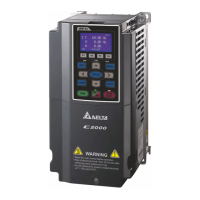
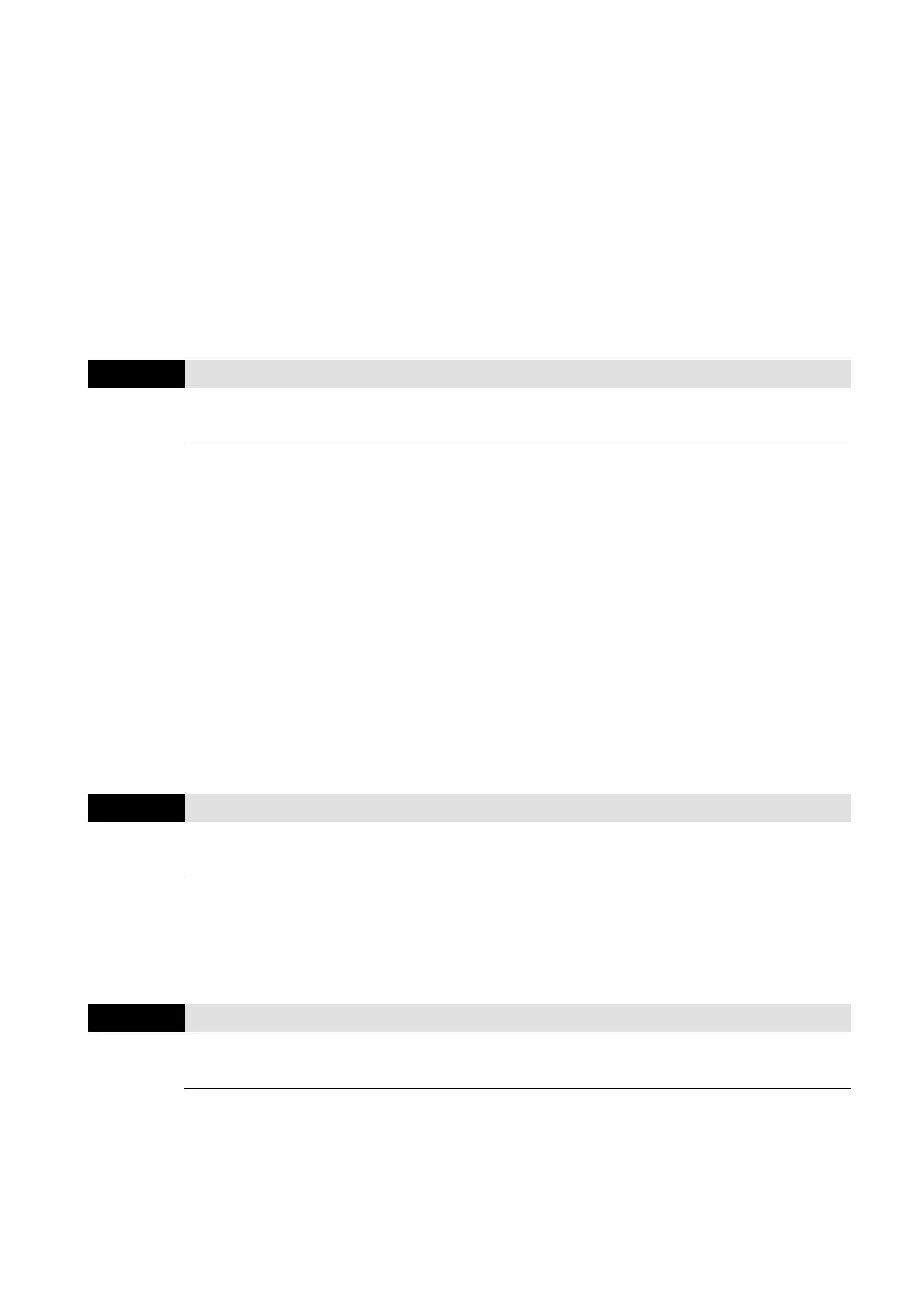